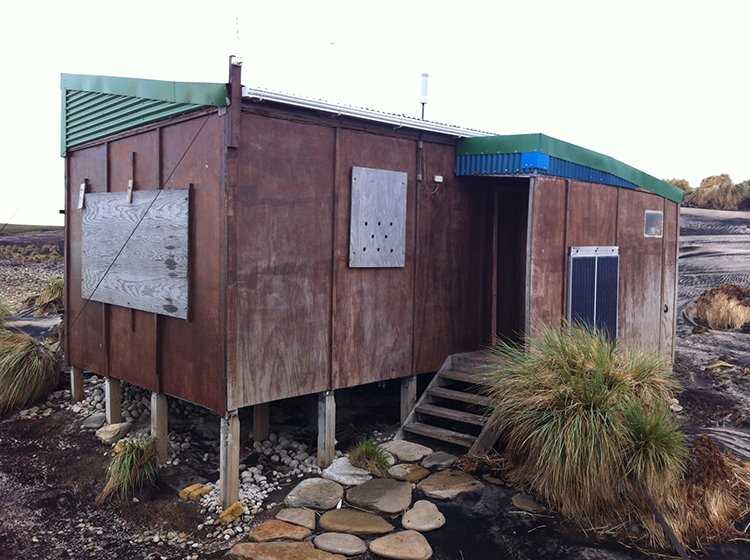Today was the first day of off-ship operations, and it was a cracker.
Early morning found us around 51° 08’ S, 59° 44’ W. Early risers would have seen two Zodiacs depart the ship at 6:00 a.m. with a handful of staff. This was an operation to deliver Dr. Peter Carey and equipment to Bense Island, one of a small group of islands that have been the subject of a long-term research and rodent eradication project carried out by “SAFER”: the SubAntarctic Foundation for Ecosystems Research. Peter has just completed work on National Geographic Orion as expedition leader and was returning to the island to monitor the effectiveness of the mid-winter bait program for the eradication of rats and mice. Lindblad has supported the work of the foundation by provision of logistics support and materials for weatherproofing the research hut.
After breakfast we geared up for our first landing on Carcass Island (named for the Royal Navy vessel HMS Carcass that surveyed the island in 1766). We landed on a pristine beach with white sand, no swell and crystal clear water. We were greeted by Magellanic Penguins and a host of other sea and shore birds. The island is rat and cat free, making it an important haven for wildlife including the rare and vulnerable Cobb’s wren, luckily spotted by some of us near the landing. The island is a farm where sheep and cattle graze, but guests are welcome to visit and enjoy the delights of the island’s natural wonders and, after a comfortable 2.5 mile walk across country, the local community hosted us to an excellent morning tea with a cornucopia of scones and cakes. The sun shone and the breeze was not intrusive although some of us received our first drenching on the passage across to the ship.
We returned to the ship for lunch during which we relocated to Saunders Island for a second landing of the day. Saunders is also an operating grazing property and home to breeding Magellanic, gentoo and rockhopper penguins. One macaroni penguin was also found intermingled with rockhoppers. This made it a day where five different species of penguins were sighted, a rare treat and something to brag about. In addition to that, a modest walk brought us to a point above a colony of breeding Black-Browed Albatross. These spectacular birds nest on steep hillsides from which they can easily take flight by merely facing into the breeze and opening their expansive wings.
We had the whole afternoon to enjoy the beach and rookeries. Although the sun continued to shine, the wind picked up causing a sand blast effect across the beach. This was a modest discomfort in comparison to the natural history delights of the day. After returning to the ship we had informative recaps over cocktails in the lounge that provided greater depth of knowledge about the biology and social life of the various species seen during the day.






